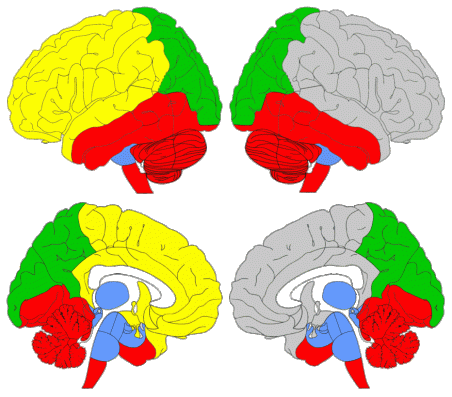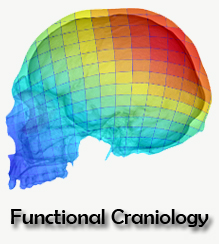We have recently published a new paper regarding modularity and community detection in the context of human brain anatomical network analysis (Schuurman & Bruner, 2023a). Humans’ morphologically complex brain is spatially constrained by the physical interactions of its elements, and this aspect can be studied using anatomical network analysis. A crucial issue in this framework is modularity, assessed by means of community detection algorithms: the presence of groups of elements undergoing morphological changes in a concerted manner.
Previous works on the subject had produced mixed results: Bruner et al. (2019) and Bruner (2022) found longitudinal (anterior-posterior) modular partitions of the brain, while Schuurman & Bruner (2023b) found a vertical (superior-inferior) modular partition. In the present study, our aim was to test an array of community detection algorithms on a previously designed anatomical network model (Schuurman & Bruner, 2023b), offering a quantitative exploration of modularity to generate well-founded interpretations of the observed morphological organization of the human brain.
The algorithms that were examined comprise the combined method of the spin-glass model and simulated annealing algorithm (SG-SA), a partitional method with an automatic determination of the number of communities; the Louvain method, a heuristic method reliant on Q optimization with no a priori assumptions on community size or number; Infomap, an algorithm that focuses on information diffusion across the network; the generalized topological overlap measure (GTOM), a hierarchical clustering method based on the level of structural equivalence of the network’s nodes; and agglomerative hierarchical clustering based on maximal clique (EAGLE), which identifies initial subsets of completely connected nodes, then merges these subsets hierarchically according to their topological similarity and identifies the ideal partition using Q optimization.
The algorithms that provide the highest quality partitions are SG-SA and the Louvain method. However, all five of them supply useful information. SG-SA, Louvain and Infomap reveal a clear vertical modular partition of the brain: they yield only two superior modules (these span regions as posterior as the middle occipital gyrus) and three inferior modules. Additionally, Informap goes as far as to subdivide the posterior inferior module vertically again, into a superior and an inferior posterior submodule. On the other hand, GTOM and EAGLE, show a more obvious longitudinal division: firstly, they separate the superior modules longitudinally (these only reach as far as the supramarginal gyrus), generating an additional, more posterior, superior submodule; and secondly, many regions incorporated in the inferior modules by SG-SA, the Louvain method and Infomap, are here considered to be part of the superior modules, contributing even further to this sense of anterior versus posterior. In other words, jointly, the community detection algorithms expose the simultaneous occurrence of a longitudinal and a vertical modular partition. This combination mirrors the morphological organization of the enveloping braincase, separated vertically by the distinct developmental processes of the cranial base and vault, and longitudinally by the particular morphogenetic environments of the three endocranial fossae. Overall, results suggest a level of concerted topological reciprocity in the spatial arrangement of craniocerebral anatomical components. Lastly, they posit questions concerning the degree to which structural constraints of the skull and the modular partition of the brain may channel both evolutionary and developmental trajectories.
Tim Schuurman








August 24th, 2023 at 2:51 pm
[…] Some months ago, we published a comprehensive network model for considering the topological properties of the cerebral regions. Now, we have tested the modular organization of this model according to different community detection algorithms. In anatomy, modularity should not generally be intended as the result of total independence between parts, but instead as a matter of degree: some regions are more integrated with others, although the whole anatomical system (in this case, the brain) is, to some extent, integrated as a whole. Such partial modularity is indeed crucial in both ontogeny and phylogeny, channeling variation and generating constraints. This is why it is useful to test modularity through different models and through different (mathematical and biological) criteria, approaching the biological organization of an anatomical system according to distinct perspectives. In the case of the model we have employed, the Louvain method for community detection (a default choice in Gephi) works pretty well. The main partition separates the regions of the cranial base and the regions of the vault, stressing once more possible associations between cranial and cerebral topology. It remains to be established who shapes who, although we should expect that such influences are reciprocal, or at least depend on local factors. The temporal lobes (which display a very entangled topological situation according to the previous analyses) act as an intermediate hybrid region, influenced by both dorsal and ventral blocks. Among the five algorithms tested, only the two with lower efficiency of partition support spatial integration between occipital and parietal lobes, a relationship that was instead suggested according to former studies on both cortical and cranial elements. Another post with more information on this article is available in our lab blog. […]